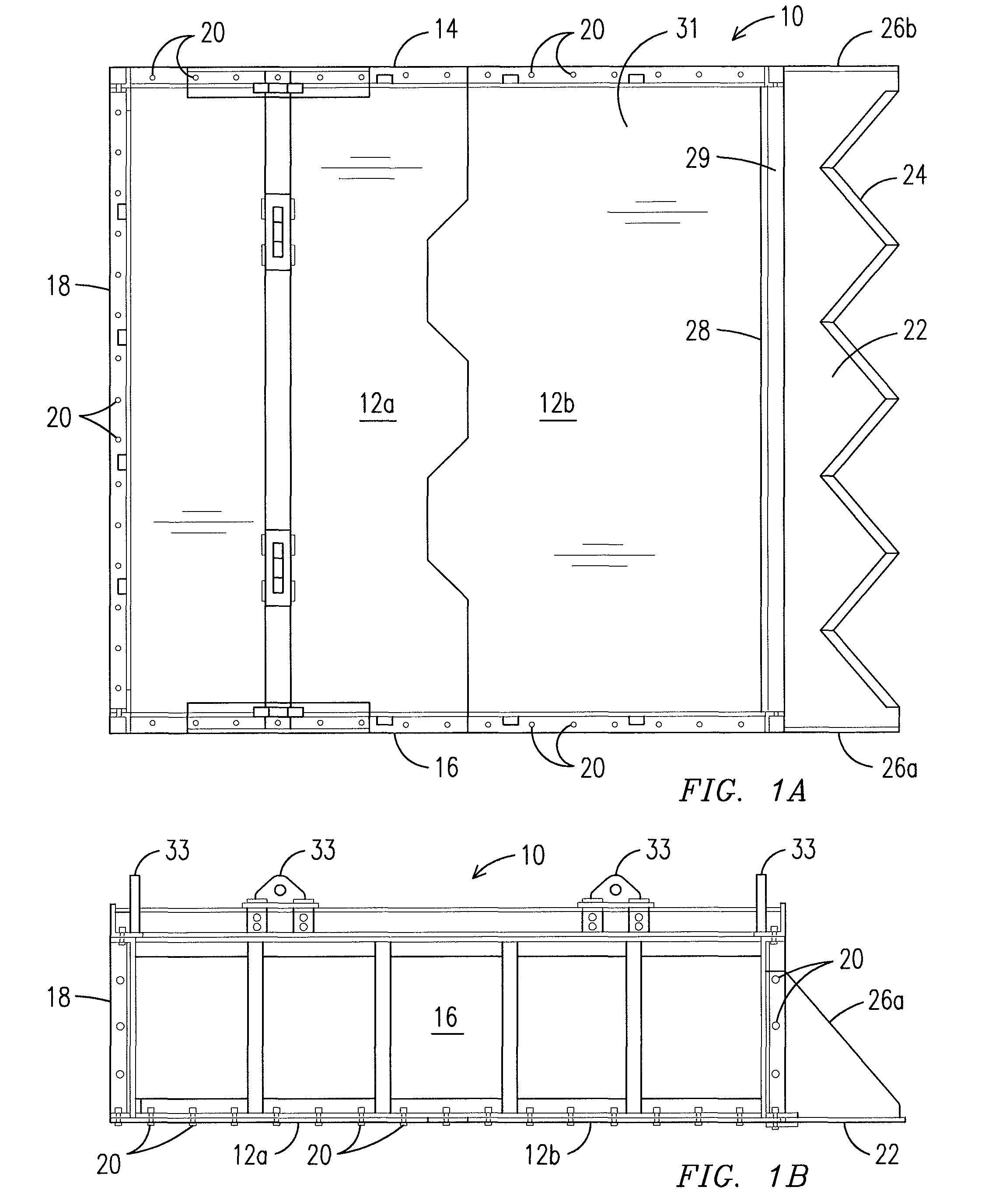Method and system for transplanting large trees
a tree and trunk technology, applied in the field of tree transplanting systems, can solve the problems of reducing the size of the root ball, difficulty in digging a sloping sidewall around the tree, and not being generally transplantable, and achieve the effect of minimizing the stress on the tree and minimizing the overheating of the root ball
- Summary
- Abstract
- Description
- Claims
- Application Information
AI Technical Summary
Benefits of technology
Problems solved by technology
Method used
Image
Examples
Embodiment Construction
[0017]The system of the present invention uses a box-shaped steel structure having three closed sides and a bottom to rapidly excavate a large tree. The term “box-shaped” as used herein refers to a final configuration of a preferred form of the structure for enclosing the root ball of a tree being excavated and while shown as generally square, could take on other configurations. The structure comprises a bottom plate, which may be formed from one, two or more steel plates, bolted to three vertical steel members or side plates forming an open-sided box. The bottom plate is the primary structural member of the box structure and also incorporates the blade for undercutting a tree root ball. In one exemplary embodiment, the bottom plate is formed of two mating plates of 1 inch thick steel sheet each measuring somewhat larger than about five feet by ten feet in order to define about an 10 foot by 10 foot box (inside dimension) when the side plates are installed on the bottom plate. The s...
PUM
 Login to View More
Login to View More Abstract
Description
Claims
Application Information
 Login to View More
Login to View More - R&D
- Intellectual Property
- Life Sciences
- Materials
- Tech Scout
- Unparalleled Data Quality
- Higher Quality Content
- 60% Fewer Hallucinations
Browse by: Latest US Patents, China's latest patents, Technical Efficacy Thesaurus, Application Domain, Technology Topic, Popular Technical Reports.
© 2025 PatSnap. All rights reserved.Legal|Privacy policy|Modern Slavery Act Transparency Statement|Sitemap|About US| Contact US: help@patsnap.com



